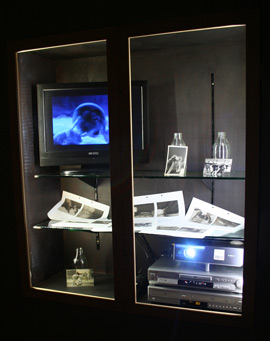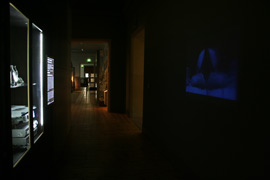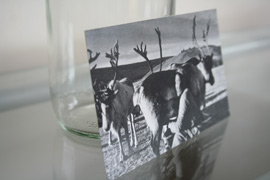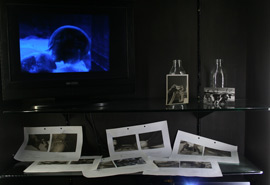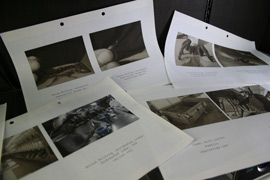Project 8 GOW at GNM
23rd August - 24th September 2011
Helen Bullard
BLUE BLOOD (the borrowing)
A small white horseshoe crab moves in a thick glass aquarium in the Hancock Museum, Newcastle, UK. Cast, in a beautiful royal blue light, she pulses her gills, and balances on her tail spine as she beats her five pairs of spidery legs. She is perfectly evolved. She has remained unchanged for an estimated 350 million years. Her arachnid body breaths with lungs, her copper rich blood flows with endotoxins that protect her from infection in case of attack. The only species that can penetrate her tough shell are turtles, sharks and humans. Her alien motion is hypnotic.
It is unusual to find living animals in museums. But, when animals are encountered out of their contexts, they incite such voyeurism; the alien; the freak; the Wunderkammer of life. She is a butterfly twisting on a pin.
Across the Eastern Seaboard, her fellows are borrowed, and milked of their blue blood for the pharmaceutical industry. It relies on the Limulus Amebocyte Lysate(LAL)content for intravenous drug manufacture, which clots at the first signs of bacteria. All intravenous drugs must contain it. This borrowing sees thousands milked every year of up to a third of their blood in sterile factories, before being returned. Bait fisherman, who first found their livelihood eeling with horseshoe crab bait, are now paid by the pharmaceutical industry to harvest the crabs in their boats, and return them after the milking.
The ‘milking’ of freaked animals for the wellbeing of others is not often symbiotic, but it is a farming tradition. Tapping living animals as storehouses of commodity is a parasitoid activity; we are not the only animals to harvest without killing for venom, milk, bile, blood; cure, prevention, or delicacy. But as humans, we also feed from the freaking of life, voyeurism and wonder; the zoo, the curiosity cabinet, pornography and the museum. It is a harvest.
In the Hancock Museum, she undulates in her tank. Her copper blue blood flows under the cobalt water, and she glows, like a little ghost; a living fossil.
Biography:
The UK based artist Helen Bullard is working to explore subjects of animal-human divergence and convergence, and the boarder lines of disciplines. Since graduating in 2007, her fascination in science and natural history has often led her to work in collaborative partnerships with other artists, scientists and researchers. She has been funded to make work in Bulgaria, Black Isle, Orkney and The Fens.
In 2009, the commissioned symposium Pidgin Language: Animals, Birds and Us took place at King’s Lynn Arts Centre, in conjunction with the solo show Animus flux, and saw a diverse delegation and panel of artists, scientists, art critics and authors discuss animals and their use as subjects in the arts, sciences and culture. The essay Fostering Pidgins is due to be published shortly in the Art and Animality issue of Art & Research: A Journal of Ideas, Contexts and Methods.
Helen Bullard is currently Artistic Research Associate in the Department of Experimental Psychology at the University of Cambridge, screenings coordinator at Greyfriars Art Space, King’s Lynn, and a member of the advisory board for Antennae: The Journal of Nature in Visual Culture.
Blue Blood (the borrowing) is the first foray towards a larger project investigating horseshoe crabs, parasitoid animals, and a growing interest in synthetic biology, biomedicine and relationships of ‘milking’.
helen.bullard1@btinternet.com
